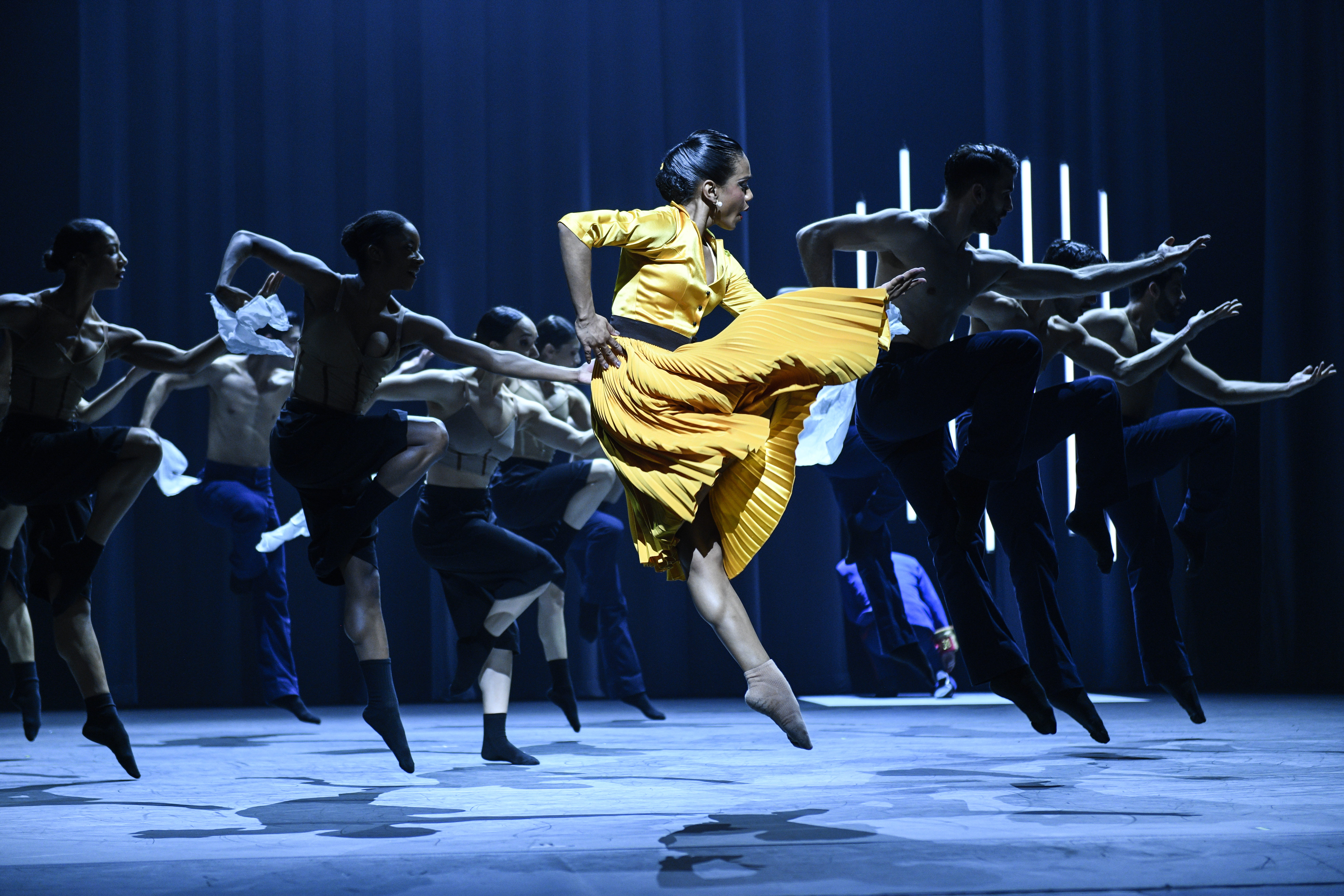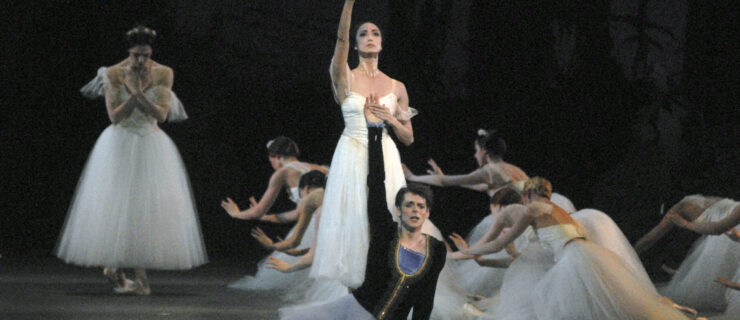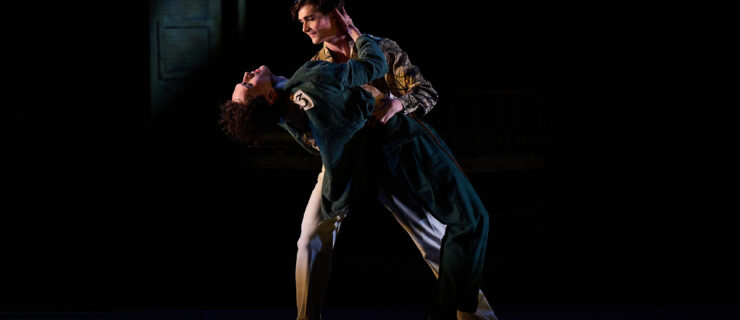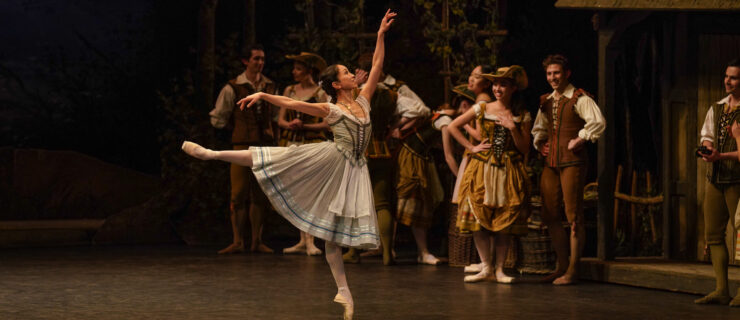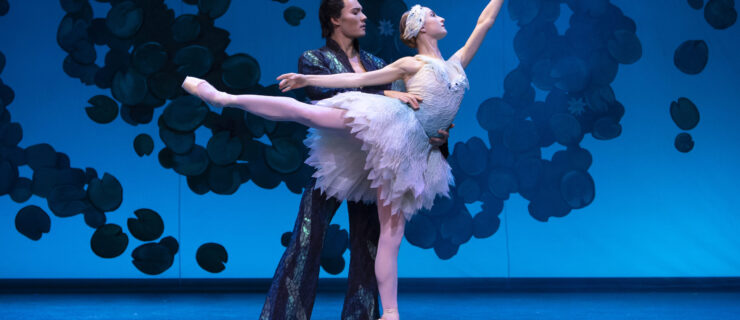Meet the Ballet Dancers from Dance Magazine’s 2023 “25 to Watch”
Updated 1/4/23.
Our friends at Dance Magazine have announced their annual “25 to Watch” list. The round-up features emerging dancers, choreographers and companies you should know, spanning multiple dance genres. And, of course, we can’t help but feel excited about those from the ballet world. Read on to learn more about them, then be sure to read the full “25 to Watch” list here.
Dandara Veiga
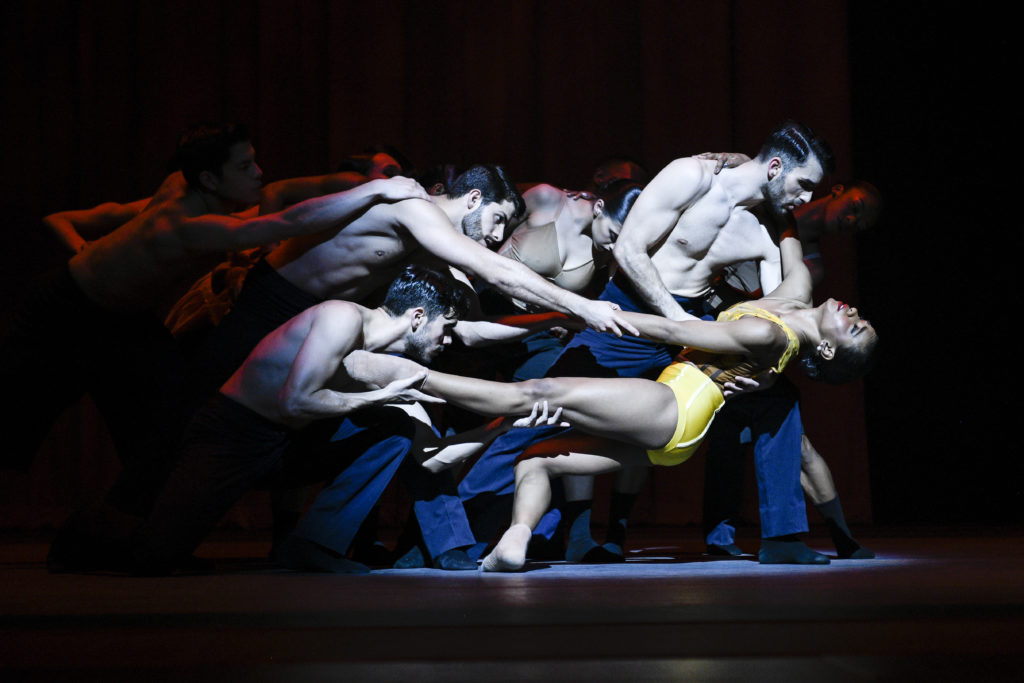
Annabelle Lopez Ochoa’s Doña Perón, created for Ballet Hispánico, does not shy from darkness. Its portrait of Eva Péron devotes ample time to the shadowy aspects of the controversial Argentine first lady’s life. But such is the brilliance of Dandara Veiga’s charisma that, should you see her in the title role, you’ll inevitably come out admiring Evita.
The kind of dancer who can make psychological turmoil legible in her body, Veiga brings us not just into Perón’s world but into her churning mind. Her dancing and acting share a clarity of purpose: Every element is well-defined, though free of melodramatic overstatement. In Veiga’s hands (and limbs, and face), Perón becomes a person rather than a caricature.
Veiga has been a standout since joining Ballet Hispánico in 2017. But Doña Perón, the company’s first commissioned full-length work, gives her room to expand into her artistry. It’s a star vehicle, and Veiga is a star. —Margaret Fuhrer
Cameron Catazaro
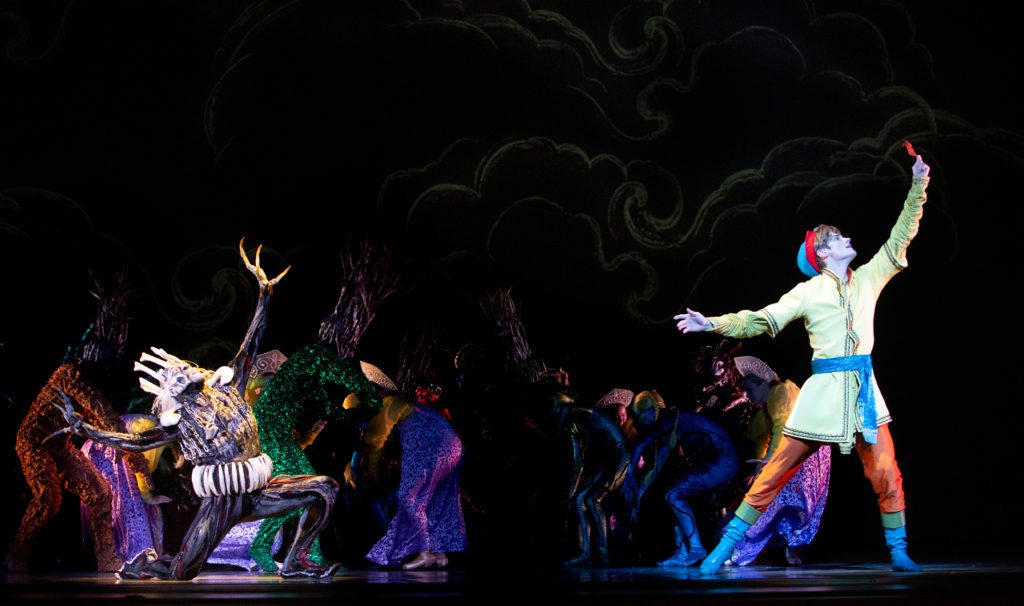
Steady strength and lyrical pliability put a bloom on Cameron Catazaro’s dancing. His carriage—at over 6′ 2″, he stands tall in the corps of Miami City Ballet—adds nobility and romantic magnitude to his portrayals, a combination that has earned him a bouquet of eye-catching roles, with Prince Siegfried in Alexei Ratmansky’s Swan Lake at the forefront. Catazaro credits his Swan Queen, principal soloist Samantha Hope Galler, with inspiring him to build, through a diligent work ethic, dramatic dimension. His knack for characterization has also heightened the father’s solemnity in Prodigal Son and put youthful vigor into an old legend through Prince Ivan in Firebird.
Canton, Ohio–born and trained, Catazaro spent a year each at Ballet Academy East and MCB School fine-tuning Balanchine-style technique, which sped him, after joining the company in 2019, to featured roles in “Emeralds” and Stravinsky Violin Concerto. And his repertoire keeps growing. Just this fall he took the lead in John Cranko’s Romeo and Juliet. For the season ahead, he’s learning Jerome Robbins’ Afternoon of a Faun and is set to perform Martha Graham’s Diversion of Angels, in which he spread his first-timer’s wings at Jacob’s Pillow last summer. —Guillermo Perez
Guillaume Diop
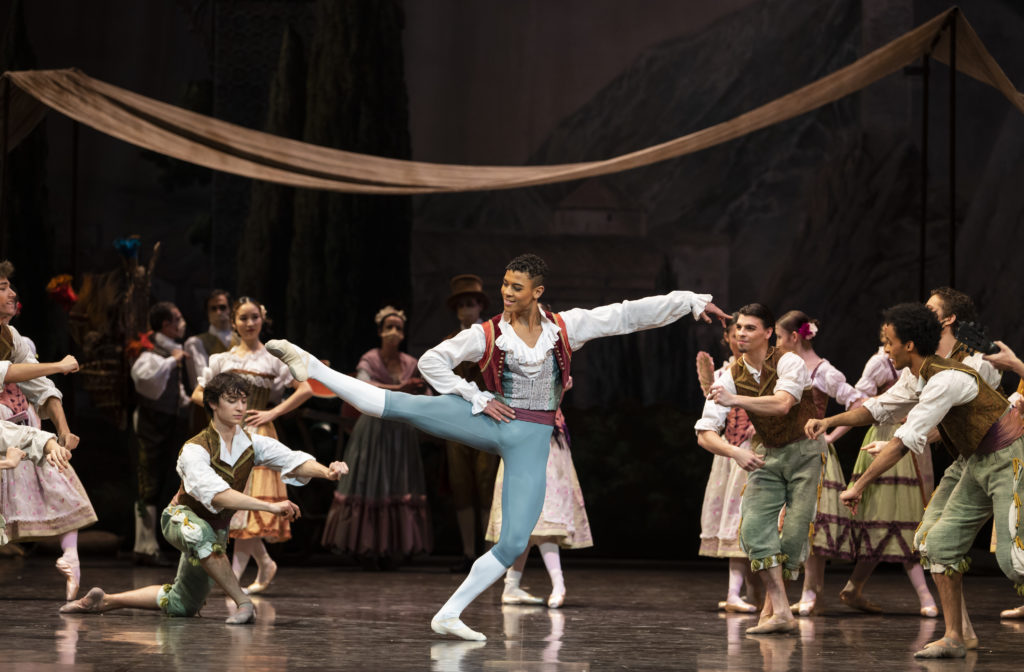
Becoming the face of diversity at a venerable institution like the Paris Opéra Ballet is no small burden to bear—and can magnify the pressure of a high-profile debut. For a split second, early in Guillaume Diop’s first performance as Solor in La Bayadère last season, a flash of panic registered on his expressive face as the 22-year-old struggled to keep French star Dorothée Gilbert balanced in his arms.
Yet not only did Diop recover, but he improved as the evening went on, with supple elevation in Solor’s treacherous variations and unaffected poise. Born to a French mother and a Senegalese father, the young corps member—who trained at the Paris Opéra Ballet School, but credits a summer intensive with Alvin Ailey American Dance Theater as a personal breakthrough—has handled every challenge with grace in his four years with the Paris Opéra.
In 2020, he was among a group of Black employees who pushed for progress around racial issues at the institution. The following year, Diop, who was still a quadrille—the lowest corps rank—was given the last-minute opportunity to replace an injured principal as Romeo in Nureyev’s Romeo and Juliet. Under heavy scrutiny, Diop’s joyful elegance won over the audience, a feat he repeated as Solor and as Don Quixote’s Basilio. This fall at the internal concours de promotion, he was promoted to the highest corps rank, sujet. The road to becoming the French company’s first Black étoile may be long, but Diop has all the makings of a trailblazer. —Laura Cappelle
Adelaide Clauss
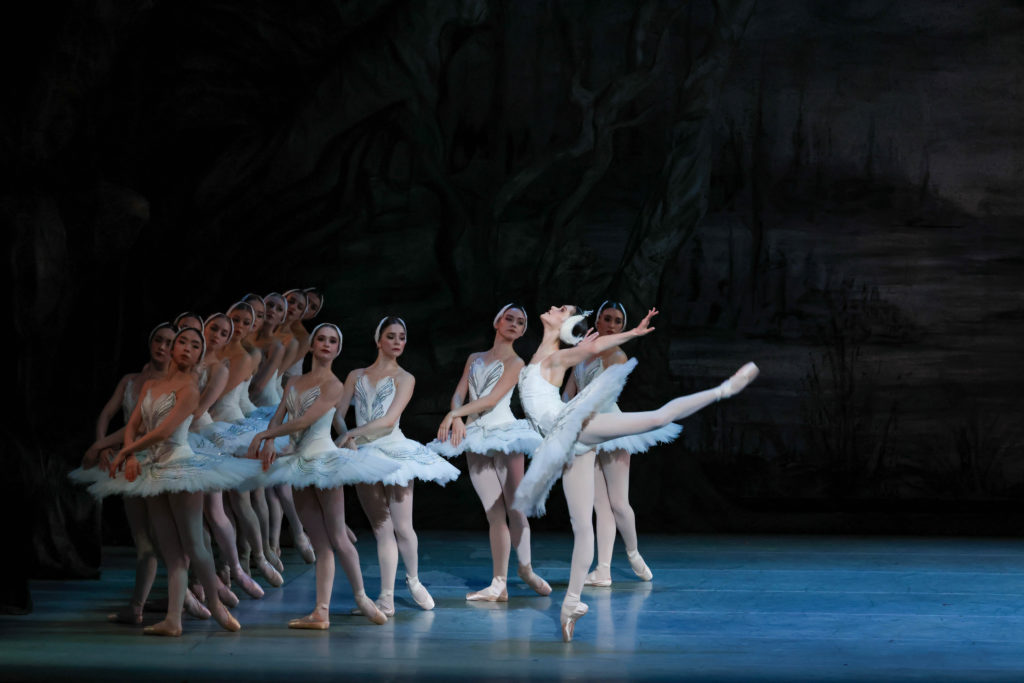
As Terpsichore in Balanchine’s Apollo this summer, The Washington Ballet’s Adelaide Clauss mesmerized the audience—as well as Apollo—with adroit, sharp-edged dancing coupled with a flirtatious allure. Gifted with ribbonlike épaulement and an ardent work ethic, Clauss is a consummate artist.
A Buffalo, New York, native, Clauss trained at The Neglia Conservatory of Ballet and American Ballet Theatre’s Jacqueline Kennedy Onassis School. Catching the eye of TWB artistic director Julie Kent shortly after joining ABT’s Studio Company in 2015, the now-24-year-old is currently in her sixth season with TWB and a bona fide company star.
“Adelaide has this mystery, imagination and luminous quality that allows her to lose herself in whatever roles she is performing,” says Kent. With Clauss having done so in plum roles including Odette/Odile in Kent and Victor Barbee’s Swan Lake and The Lilac Fairy in their The Sleeping Beauty, along with the Sugar Plum Fairy in Septime Webre’s The Nutcracker, Kent foresees her having many more opportunities to further develop as a storyteller in 2023 and beyond. —Steve Sucato
Ashton Edwards
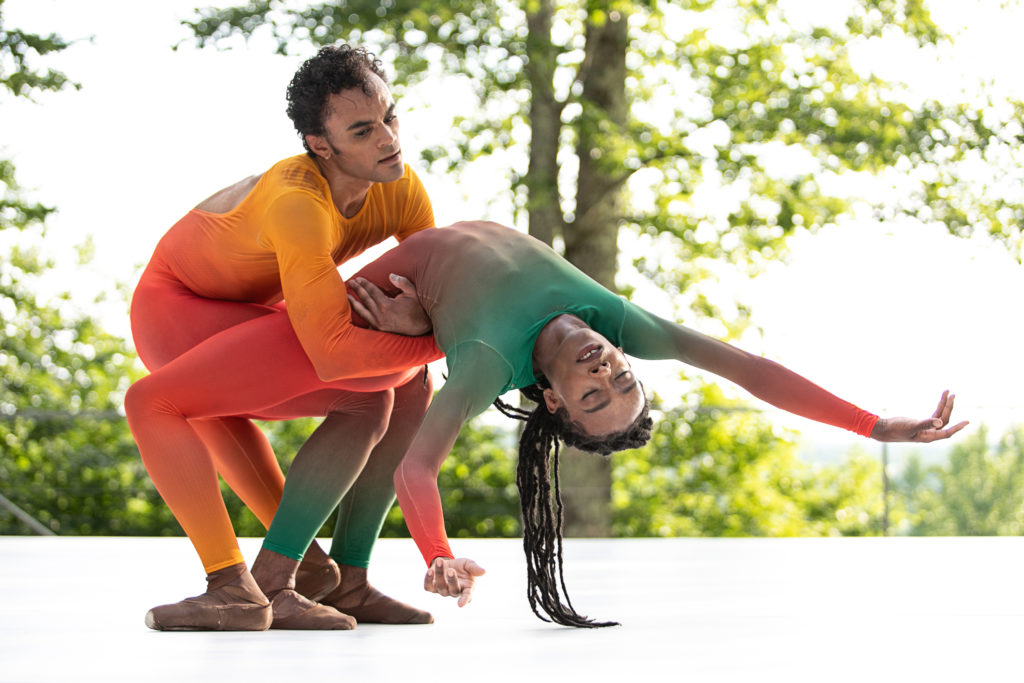
A soaring jump, whirligig turns, refined pointe work, lines for days—Ashton Edwards has them all. But what makes the 20-year-old Pacific Northwest Ballet corps member an unforgettable performer isn’t their meticulous technique, musicality and apparently effortless physicality—it’s joy, pure and simple. Onstage, Edwards (whose pronouns are they/them) radiates a love for ballet that started at age 3, when they saw Brandye Lee dance the Sugar Plum Fairy. “I just wanted to be everything she embodied,” says Edwards. They started training a year later, and ballet quickly took on a deep personal resonance. “Growing up queer in the Black community, and also in a low-income community, it was this escape from reality,” they say.
Fast-forward 16 years and Edwards has garnered featured roles in Justin Peck’s The Times Are Racing and Dwight Rhoden’s Catching Feelings at PNB, and in Mango, adapted from Andrea Miller’s sky to hold, in Taylor Stanley’s Dichotomous Being program at Jacob’s Pillow. They’ve also had an impact as a nonbinary ballet dancer of color. “Ashton is so much more than their talent,” says PNB artistic director Peter Boal. “They are a thoughtful advocate for change within the company and in the world of dance.” Yet for Edwards, everything still comes down to The Nutcracker, and that magical feeling of ballet bliss. “Getting to perform the corps of Snow—my heart flutters every time!” —Claudia Bauer
Quinn Starner
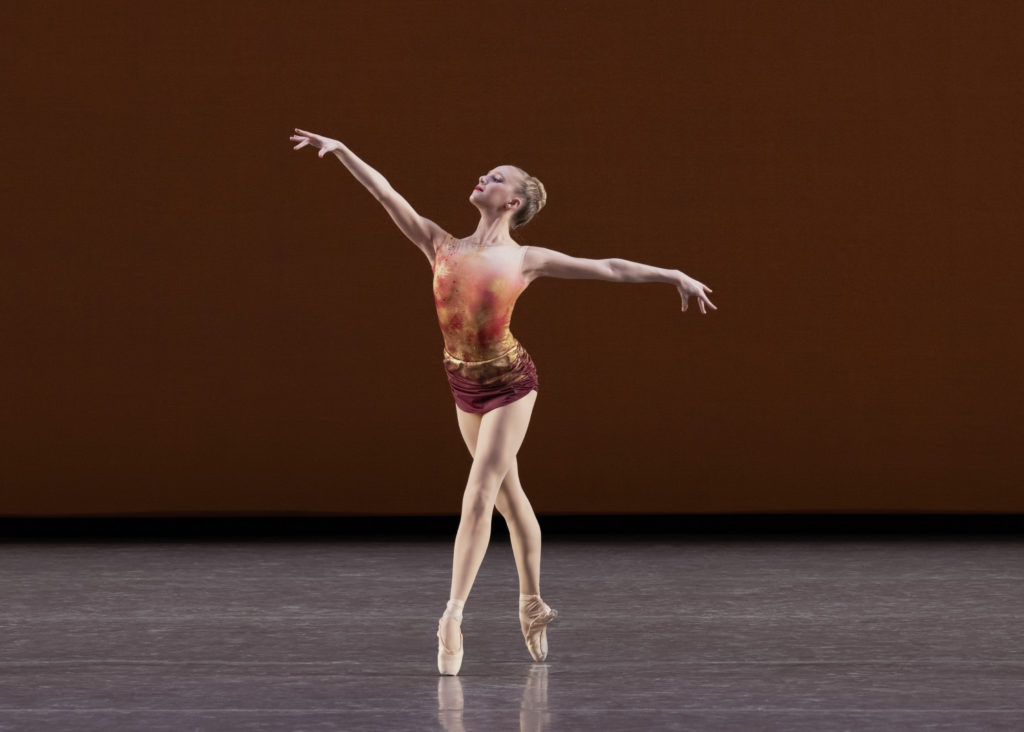
Professional ballet isn’t where most comp kids—the contemporary-competition dynamos who dominate “So You Think You Can Dance” rosters—end up. But when they do turn their distinctive powers toward ballet, magic often happens.
Quinn Starner, an alum of the competition circuit, now cuts fearlessly through choreography of all styles at New York City Ballet. When she was a young teenager, her fantastically vivid solos earned accolades at both contemporary and ballet contests. In 2018, she changed tacks, enrolling at the School of American Ballet; last year, she joined NYCB’s corps. Professional ballet life has polished down some of her harder edges, but that has only enhanced her sparkle. As an original cast member in both Silas Farley’s Architects of Time last spring and Kyle Abraham’s Love Letter (on shuffle) last fall, she showed a new refinement in her épaulement and port de bras.
Starner seems more than ready for ballet’s technical challenges, and invigorated by its artistic ones—much like fellow comp-kid-turned-ballet-pro unicorns Tiler Peck, James Whiteside and Catherine Hurlin. That’s a good list to be on. —Margaret Fuhrer
Mikaela Santos
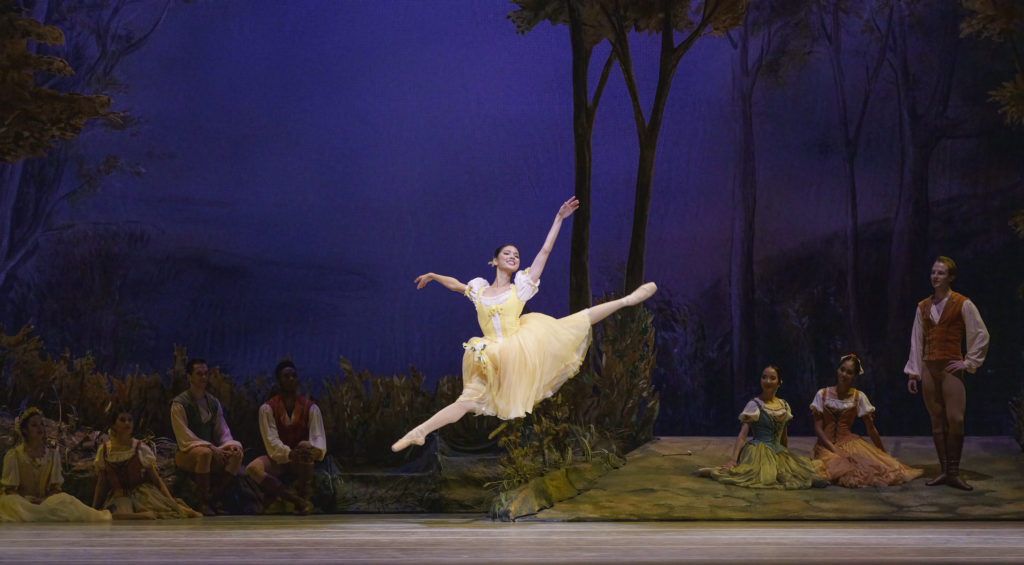
It’s her imaginative spark—along with pristine technique and bright musicality—that makes Mikaela Santos one of Atlanta Ballet’s most captivating dancers. Last March, Santos breathed startling freshness into Giselle’s peasant pas de deux, catching the music’s quickening pulse with fleet footwork while her upper body revealed buoyant flourishes with warmth and spontaneity. In May, Santos enchanted in Sergio Masero’s Schubertiada. She tripped along Schubert’s rolling rhythms with swift attack—each change of focus revealed new facets and feelings as she caught her partner’s eye and drew out the music’s playful sensuality.
Born in the Philippines, Santos credits her teacher, Effie Nañas, for preparing her to study and compete at the international level, where Santos developed an “inner presence” and the confidence to show her individuality, and with nurturing her natural expressivity. Santos often imagines she’s dancing in wind or underwater. “Once you finish a step, it breaks the moment,” she says. “I want people to feel that it’s not going to stop.” After her recent tour de force performance in Justin Peck’s In Creases, with more opportunities ahead, it doesn’t seem she’ll have to. —Cynthia Bond Perry
Simone Acri

Houston Ballet artistic director Stanton Welch has found a new muse in Simone Acri. In a jaw-dropping solo in Welch’s Sparrow, set to Simon and Garfunkel’s “Baby Driver,” Acri weaved through the driving beat, revealing the song’s bittersweet undercurrent. In Brigade, he nailed Welch’s tongue-in-cheek humor while dazzling with his freewheeling style. And it’s not just his artistic director’s work in which the demi-soloist excels: He launched this season with a robust performance of Trey McIntyre’s Peter Pan, giving the hellion of a wild child ample charisma along with soaring flying skills. With an ability to both move with total abandon and mine the in-between places, Acri sources his spectacular technique to shape a choreographer’s vision. He’s like a fully charged battery—high-energy but precise, and solid with his bravado turns and jumps. But it’s how he does those things, with such nuance, joy and connection to the audience, that has him turning the heads of spectators and artistic staff alike. —Nancy Wozny
Elwince Magbitang
It’s not every day that American Ballet Theatre casts an apprentice in a soloist role. And yet, as Elwince Magbitang soared through barrel turns, 540s, tours and other feats in the second act of Don Quixote last June, it was clear that the company was introducing its audiences to a virtuoso talent.
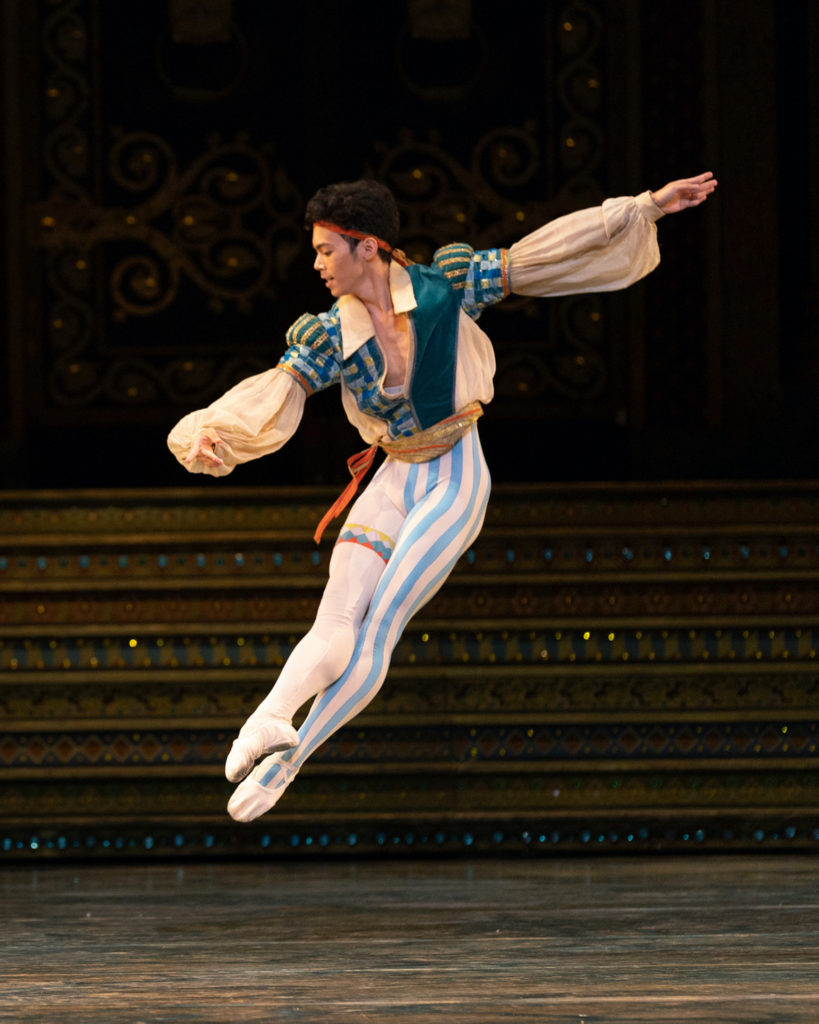
Powerful, musical and charismatic, the 21-year-old Magbitang has been creating buzz since he arrived in 2018 from his native Philippines to train at ABT’s Jacqueline Kennedy Onassis School. As a student he was chosen to dance a small part in the premiere of Alexei Ratmansky’s The Seasons. Shortly afterward, in 2019, he joined ABT’s Studio Company, where he impressed in bravura roles like the folk-inspired Gopak variation. This fall, as a newly promoted corps member, he made his debut as Puck in Sir Frederick Ashton’s The Dream.
“Elwince’s dancing shows strength and panache,” says former ABT principal Stella Abrera, a close mentor. She spotted Magbitang, then a student at Manila’s Steps Dance Studio, in 2018 when he performed in a fundraising gala she organized in the Philippines. Impressed, she and her husband, Studio Company artistic director Sascha Radetsky, arranged his audition for the JKO School. “It’s been such a thrill witnessing his journey,” Abrera says. “He’s an inspiration to his hometown and beyond.” —Amy Brandt
Erin Casale
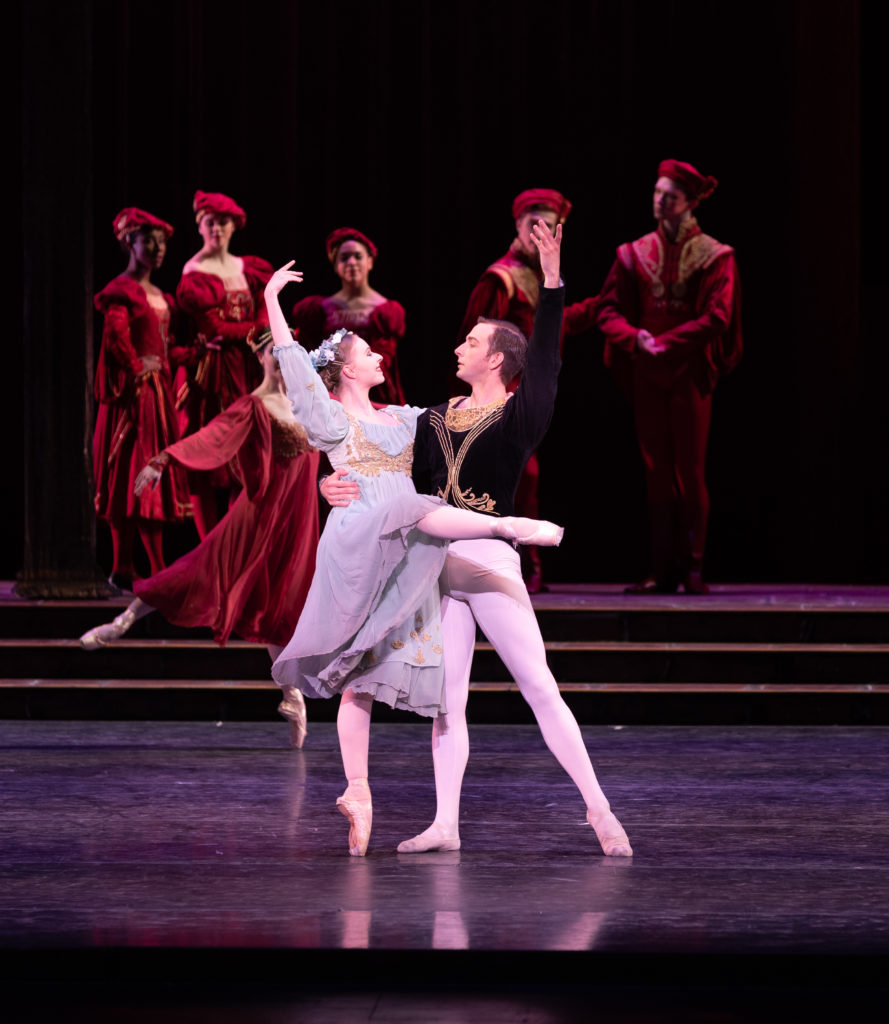
A compact powerhouse as much at home in leotard roles as she is in tutu-and-tiara ballets, Erin Casale is every bit a 21st-century dance artist. In an excerpt from Marius Petipa’s Le Talisman while she was a student at Pittsburgh Ballet Theatre School, her buoyant steps, turns and extensions evoked visions of an ebullient Disney heroine. As a featured soloist in Nacho Duato’s Duende, she contorted her body into shapes resembling symbols from some ancient civilization. “Erin is very daring and dynamic when she moves,” says former Pittsburgh Ballet Theatre artistic director Susan Jaffe. “When I needed someone with presence and power to dance the lead in my Bolero, Erin was the perfect fit.”
A Johnstown, Pennsylvania, native, Casale trained at Virginia’s Academy of Russian Ballet and Johnstown Concert Ballet prior to going to PBT’s school, where she rose through its levels to be handpicked in 2019 by then–artistic director Terrence S. Orr to join the company. Now in her fourth season with PBT, the 23-year-old says her career goal is “to experience everything.” —Steve Sucato
